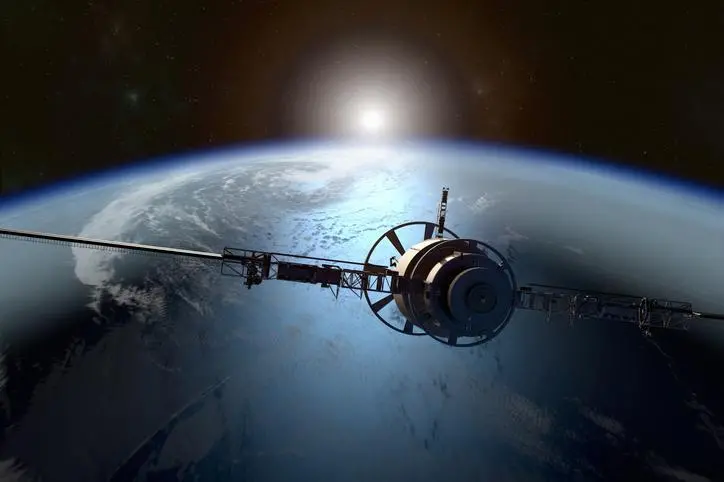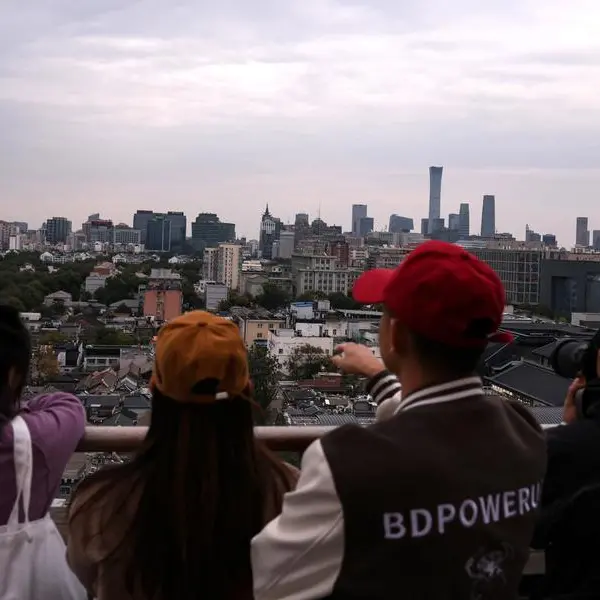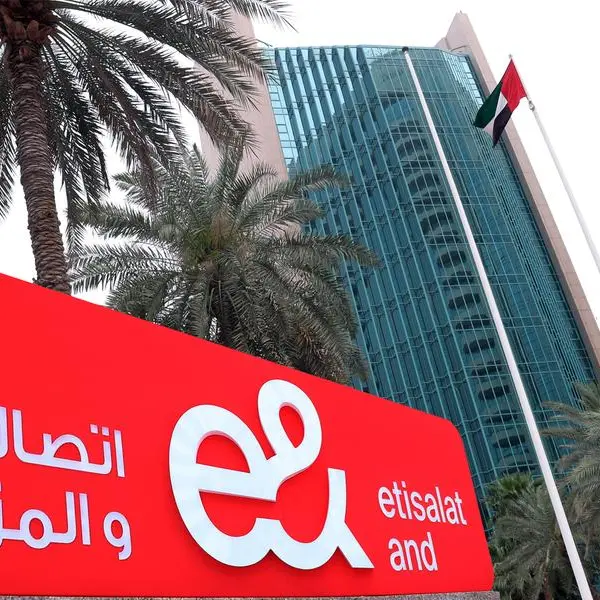PHOTO
The success of the ‘Zayed Ambition 2’ has paved the way for realising the UAE’s plan to launch human spaceflight missions on a regular basis, after every three to five years.
This was revealed by the Mohammed Bin Rashid Space Centre (MBRSC) on Monday that is already preparing for a new phase of space exploration.
Over the next decade, the nation has established its ambition to become a leading force in the international space arena and aims to position itself as a frontrunner in the expanding global space economy, projected to attain a value of $1 trillion by 2040.
This drive also follows the successful launch of Emirati astronaut Sultan Al Neyadi into space in March 2023 who etched his name in history books as the first Arab astronaut to venture into the unknown depths of space.
The remarkable achievement served as the crowning glory of the Zayed Ambition 2 mission, the Arab world's most extended space expedition. This mission, alongside a series of ambitious projects, has firmly established the UAE as a prominent member among the exclusive group of nations actively engaged in space exploration.
Founding fathers played a pivotal role
His Excellency Hamad Obaid Al Mansoori, Chairman of the Mohammed Bin Rashid Space Centre (MBRSC), says, “The remarkable achievements of the UAE National Space Programme have been made possible by the vision of the country’s founding fathers and the strategic investments made by its current leadership in developing the infrastructure, technologies and talent needed to make it a frontrunner in the global space industry.”
In a tribute to its founding fathers, the UAE’s crewed missions were named after the late Sheikh Zayed, the Father of the Nation, whose passion for space shaped national aspirations in the sector. The early vision for the UAE National Space Programme was formulated by Sheikh Zayed who held many meetings to discuss space in the 70s, including a memorable gathering in Abu Dhabi with three American astronauts. The UAE’s first lunar rover, built by Emirati engineers, was named ‘Rashid’ after the late Sheikh Rashid bin Saeed Al Maktoum, the architect of modern Dubai.
The MBRSC launched in 2006 propelled the UAE into the space big league.
AlMansoori adds, “Starting with just five engineers, MBRSC put together a comprehensive programme to develop the sophisticated capabilities needed to undertake ambitious space missions. MBRSC also forged collaborations with a multitude of entities, both in the public and private sector, including other space agencies, international organisations, and universities and faculties specialising in space science. With rapidly created local capacities, the MBRSC launched a range of trailblazing space missions covering advanced indigenous satellites, interplanetary missions and crewed space journeys.”
MBRSC to launch MBZ-SAT
In 2024, MBRSC plans to launch MBZ-SAT, a satellite that will break new ground in high-resolution imaging from outer space.
In October 2018, the MBRSC built and launched the first 100 per cent UAE-designed and manufactured Earth observation satellite KhalifaSat, cementing the country’s position amongst leading space technology manufacturers.
Earlier, a team of Emirati engineers had worked closely with South Korean experts to design and manufacture the country’s first two observation satellites, DubaiSat-1 and DubaiSat-2 launched in 2009 and 2013 respectively, and its first nanosatellite, Nayif-1.
Interplanetary missions
In 2014, the UAE initiated the Emirates Mars Mission, or Al Amal, aiming to send the Arab world's first mission to Mars. The mission became a reality in February 2021 when the Hope Probe successfully entered Mars' orbit. This interplanetary mission has provided valuable insights into the Martian atmosphere, significantly contributing to global knowledge.
Additionally, in 2017, the UAE launched the Mars 2117 program with the goal of establishing the first human settlement on Mars within the next century. This ambitious initiative, led by MBRSC, reflects the UAE's leadership's commitment to advancing humanity's interplanetary exploration and knowledge.
Human spaceflight missions
In 2018, astronauts Hazzaa AlMansoori and Sultan AlNeyadi were selected to form the first batch of the UAE Astronaut Programme, while the second batch selected in 2021 featured Nora AlMatrooshi, the first female Arab astronaut, and Mohammad AlMulla.
In September 2019, the UAE sent its first astronaut to the International Space Station, making Hazzaa AlMansoori the first Arab to visit the orbiting laboratory. This was followed by the Zayed Ambition 2 mission featuring Emirati astronaut Sultan AlNeyadi, which arrived at the International Space Station in March this year.
International player
The outcomes of these ambitious projects have transformed the UAE’s standing in the global space landscape. MBRSC’s missions have led to the development of new technologies and innovations that have applications in various industries, says HE Hamad Obaid AlMansoori. The Emirates Mars Mission, for example, has spurred the development of technologies in fields such as robotics, autonomous systems, and remote sensing, which can be applied to industries like agriculture, mining, and oil and gas.
The UAE Analog Mission, connected to the Mars 2117 program, aims to prepare humans for future exploration of Mars and other planets. Through simulating space-like conditions on Earth, the mission enables space scientists to conduct experiments, develop countermeasures for space hazards, and test new technologies. The initial UAE Analog Mission, the SIRIUS-21 program, was an eight-month mission completed by Emirati crew member Saleh AlAmeri in July 2022. It successfully achieved its objectives in testing the effects of isolation on human psychological and physiological conditions.
Similarly, the UAE Astronaut Programme through its missions to the ISS is supporting research in fields such as biomedical science, transportation and manufacturing, which can be leveraged to improve life on Earth. Sultan AlNeyadi is conducting more than 200 experiments assigned by NASA and 19 by UAE universities on the orbiting laboratory covering diverse topics including cardiovascular and immune systems, back pain, epigenetics, fluid science, plant biology, material science, sleep analysis and radiation.
Over the last couple of months, he has shared on social media photos of the unique experiments he is conducting on board the ISS.
MBRSC’s satellite projects and interplanetary missions are helping create the strong base necessary for the UAE space industry to be a top-ranked global player, highlights HE Hamad Obaid AlMansoori.
“The Centre’s programmes are fostering the development of a large pool of UAE national talent and competencies in various areas of the space industry and space exploration, the creation of new economic opportunities and industries in the UAE, and the advancement of scientific knowledge through research and development,” he said.
Additionally, the MBRSC’s Space Ventures initiative, a project launched under the umbrella of the Mars 2117 programme, serves as a launchpad for promising startups in the space sector by facilitating partnerships with the Centre on long-term projects, and providing them with the regulatory know-how and technology to attain viability and sustainable growth for the future.
Fostering local partnerships and driving economic growth
The manufacture of satellite components and development of local expertise in the field has led to the creation of new job opportunities and contributed to the growth of the UAE economy.
The development of MBZ-SAT, for example, has been pivotal in supporting the rapid expansion of the local space industry. As much as 90 per cent of the mechanical structure and 50 per cent of the electronic modules of MBZ-SAT are being built in the UAE.
MBRSC has collaborated with local companies such as aerospace manufacturing company Strata, engineering solutions company EPI, Rockford Xellerix, Halcon and Falcon Group to manufacture and supply the components necessary for the development of the new satellite. Recently local company Strata Manufacturing achieved a historic milestone by indigenously manufacturing aluminium honeycomb panels required for building satellites, in partnership with MBRSC.
The centre employs its cutting-edge technologies to conduct research and solve problems in a wide range of areas, including providing information on urban land cover and changes over time. This has helped monitor project construction progress including big projects such as Expo 2020 Dubai, the Dubai Canal and artificial islands.
The Centre has also collaborated with Al Ain Municipality to develop AI technology for analysing palm tree cover in various regions. MBRSC was able to detect 45,000 trees in less than a week, with an accuracy of 98.7 per cent.
Copyright © 2022 Khaleej Times. All Rights Reserved. Provided by SyndiGate Media Inc. (Syndigate.info).





















